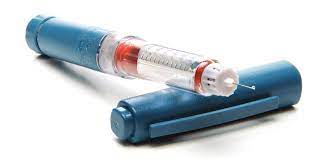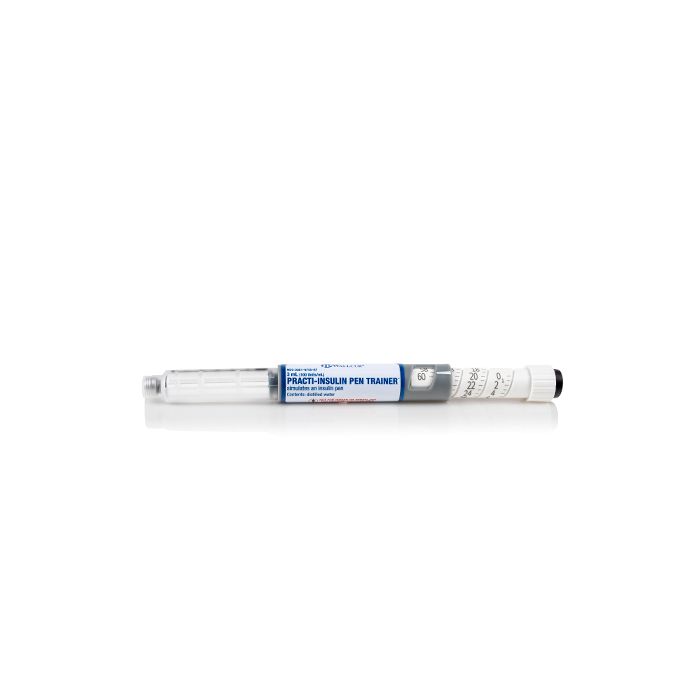How to Use an Insulin Pen for Effective Diabetes Control?
- admin
- May 26, 2025
- 10:41 pm
- No Comments

Managing diabetes effectively often relies on the proper use of insulin pens — devices designed to make insulin administration easier, more precise, and more convenient.
Insulin pens have become a popular alternative to traditional vials and syringes, helping individuals keep their blood sugar within target ranges and reducing the risk of complications.
This article by BestDietarySupplementforDiabetics research team provides a comprehensive, step-by-step guide on how to use insulin pens correctly for optimal diabetes control.
In This Article:
- Understanding Insulin Pen Devices
- Preparing Your Insulin Pen for Injection
- Selecting the Appropriate Injection Site
- Administering the Insulin Injection
- Adjusting Insulin Dosage as Needed
- Proper Storage of Insulin Pens
- Safe Disposal of Used Needles and Pens
- Traveling with Insulin Pens
Understanding Insulin Pen Devices
Insulin pens come in two main types, each with unique features that suit different needs.
>>> First, disposable insulin pens are prefilled with insulin and thrown away once empty. For example, a patient using a disposable pen like the FlexPen will simply inject doses until the insulin runs out, then replace the pen with a new one. These are convenient for people who want minimal maintenance.
>>> Second, reusable insulin pens use replaceable insulin cartridges. Pens like the NovoPen allow you to insert a new cartridge when the old one is empty, making them cost-effective and environmentally friendly over time.
Both types have a dial to set the exact insulin dose, usually in one-unit increments, and a very thin needle for subcutaneous (under the skin) injection. To illustrate, a person may dial 6 units for a mealtime dose or 18 units for long-acting basal insulin, depending on their prescription.
It is crucial that insulin pens are used by only one person, even within families, to prevent infection or contamination. Mastering correct pen technique ensures precise insulin delivery, better blood glucose control, and improved adherence to diabetes treatment plans.

Preparing Your Insulin Pen for Injection
Preparing your insulin pen correctly is essential for a safe and accurate injection.
Follow these steps carefully:
- Gather your supplies: You’ll need your insulin pen, a new pen needle, and an alcohol swab.
- Wash your hands: Clean hands reduce the risk of infection. Use soap and warm water, scrubbing for at least 20 seconds.
- Check the insulin: If you’re using cloudy (mixed) insulin, gently roll the pen between your palms about 10 times to mix it. Never shake, as shaking can create bubbles that affect dosing.
- Attach the needle: Remove the paper seal from a new pen needle, screw it securely onto the pen, and remove both the outer and inner caps.
- Prime the pen: Dial 1–2 units and press the injection button until a drop of insulin appears at the needle tip. This step removes air bubbles and ensures the pen is ready to deliver an accurate dose.
Following these steps prepares your pen properly for a safe, effective injection.
Selecting the Appropriate Injection Site
The most common and recommended insulin injection sites include several important areas of the body.
First, the abdomen is the most popular and widely used site because it provides consistent insulin absorption. However, it is essential to avoid injecting within a 2-inch radius around the belly button, where absorption can be less reliable.
Second, the front or sides of the thighs are frequently used, especially for long-acting insulin, though absorption here is generally slower compared to the abdomen.
Third, the back of the upper arms is another suitable location, although some people may need help to reach this area comfortably and safely.
Finally, the buttocks can serve as a good injection site, particularly when rotating through multiple locations to spread out tissue use.
Rotating injection sites within the same general area is crucial to prevent lipodystrophy — a condition that changes fat tissue, causing lumps or dents and interfering with insulin absorption. Always clean the skin with an alcohol swab and allow it to dry before injecting.
Administering the Insulin Injection
Here is a step-by-step guide to properly administering your insulin injection:
- Prepare the site: After cleaning with an alcohol swab and letting it dry, the skin is ready.
- Pinch the skin: Gently lift a fold of skin between your fingers to raise the subcutaneous (fat) layer, helping ensure the insulin goes under the skin, not into the muscle.
- Insert the needle: Insert it quickly and smoothly at a 90-degree angle. If you are thin or using a shorter needle, a 45-degree angle may work better.
- Inject the insulin: Press the injection button down completely to deliver the full dose.
- Hold in place: Keep the needle in the skin for about 10 seconds to make sure all the insulin has been delivered.
- Withdraw and apply pressure: Remove the needle and gently press a cotton ball or tissue on the site — avoid rubbing to reduce irritation or bruising.
Adjusting Insulin Dosage as Needed
Your insulin needs are not fixed — they can change over time due to several important factors.
For example, if your meal patterns change, such as eating larger meals or increasing carbohydrate intake, you may require a higher insulin dose.
On the other hand, increased physical activity often reduces insulin requirements because exercise improves insulin sensitivity.
Illness, infections, or periods of high stress can raise blood glucose levels, meaning your body might need more insulin to compensate.
Additionally, changes in body weight, whether weight gain or loss, can alter how much insulin is needed to maintain stable blood sugar levels.
Regular blood glucose monitoring helps you and your healthcare team identify patterns and determine when adjustments might be necessary.
However, it is critical never to adjust your insulin dose on your own, as doing so can lead to dangerous highs or lows. Always consult your healthcare provider to ensure any changes are safe and tailored to your health needs.
Proper Storage of Insulin Pens
Unopened insulin pens should always be stored in the refrigerator at temperatures between 36°F and 46°F (2°C to 8°C) to maintain their potency and effectiveness.
Once the pen is opened or put into use, it can typically be kept at room temperature, but it is important to store it away from direct sunlight, radiators, or other heat sources.
Most insulin pens have a usable lifespan of about 28 days after opening, though it is essential to follow the specific time frame recommended by the manufacturer.
Exposing insulin to extreme temperatures — whether freezing it accidentally in a cold environment or overheating it by leaving it in a hot car — can break down the insulin molecules, making the medication ineffective.
Always check the storage guidelines printed on your insulin packaging, and when in doubt, consult your pharmacist or healthcare provider for advice.
Safe Disposal of Used Needles and Pens
After each insulin injection, it is essential to safely handle and dispose of used needles. Carefully twist off the used needle from the pen and place it directly into a designated sharps container — a puncture-resistant, sealable container designed specifically for medical waste.
For example, you can buy an official sharps container from a pharmacy or use a heavy-duty plastic container like an empty laundry detergent bottle (with a secure lid) if approved in your area.
Never throw loose needles into regular household trash or recycling bins, as this poses a serious injury risk to anyone handling the waste. Once your insulin pen is completely empty, you can usually dispose of it in regular household trash, but always first remove the needle.
Following proper disposal guidelines not only protects sanitation workers and family members from accidental needle sticks but also prevents environmental contamination and helps maintain safe household practices. Always check your local regulations for specific disposal rules.
Traveling with Insulin Pens
When traveling, think of your insulin pens as VIPs — they deserve a front-row seat in your carry-on, not a freezing or boiling nightmare in the plane’s cargo hold. Pack them in an insulated bag or cooling pouch, because insulin, like you, hates extreme temperatures.
Do not forget to bring extra needles, a backup pen, and a written prescription or doctor’s note — trust me, airport security has questions, and you would want answers ready.
Imagine being stuck in an unexpected delay or overnight layover without your diabetes supplies — not a plot twist you want on your trip!
A little preparation goes a long way, turning travel headaches into smooth sailing (or flying). Remember, when it comes to managing diabetes on the go, the motto is: pack smart, stay cool, and always carry backup.

Conclusion
Mastering the insulin pen is not just a medical task — it is an empowering act of self-care that puts you firmly in the driver’s seat of your diabetes journey. Every time you prepare, inject, store, and dispose of your insulin correctly, you are not just following a routine; you’re actively safeguarding your long-term health, stability, and independence.
Effective diabetes control goes far beyond simply owning the right tools — it is about using them with precision, consistency, and confidence.
Pairing this daily commitment with regular check-ins from your healthcare provider ensures you’re always adjusting and improving as your body’s needs evolve.
With the right approach, your insulin pen becomes more than just a device; it transforms into a daily ally, helping you live life on your terms — healthy, active, and fully in control.
So take the time to master your technique — your future self will thank you for it.
References: